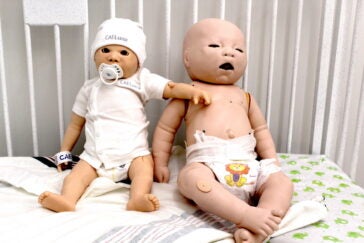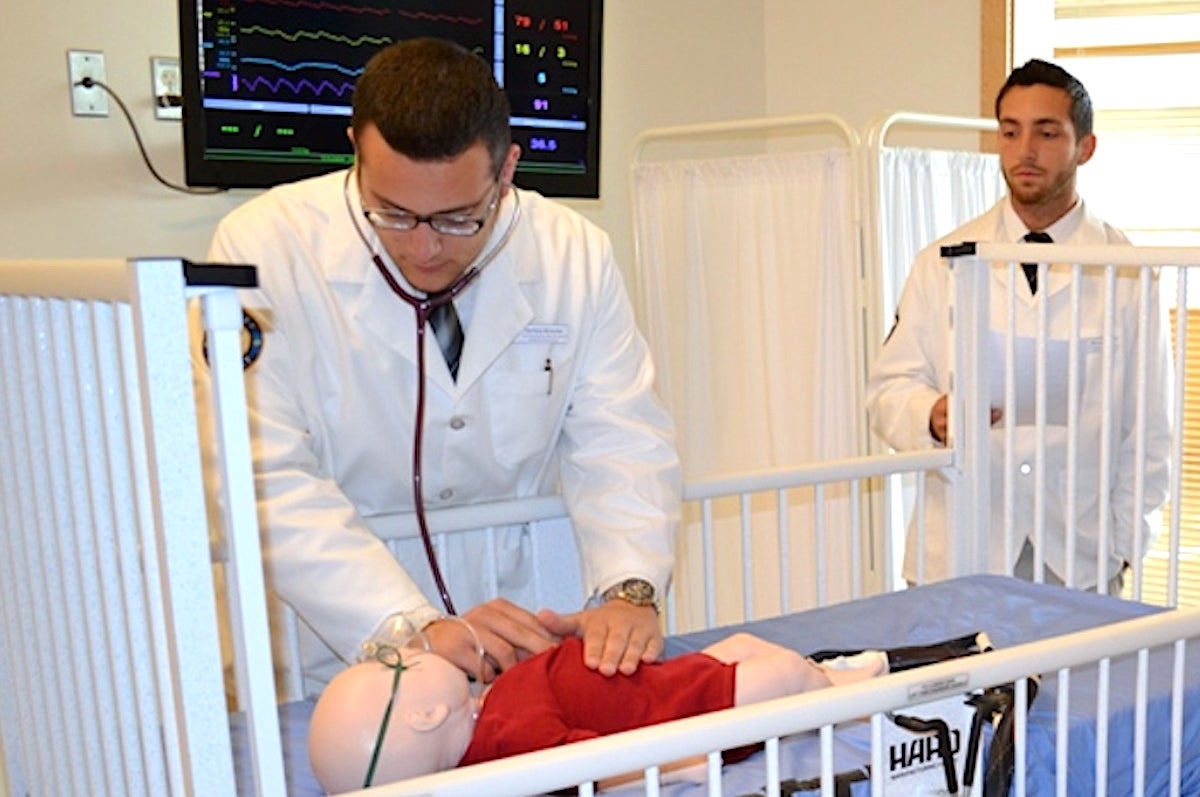College’s Patient Simulation Lab houses several life-size, animated mannequins to aid in student teaching, research
Pharmacy students at a university in Ghana, will soon have access to a high-tech, lifelike baby simulator to practice patient care, thanks to a donation by the University of Rhode Island College of Pharmacy.
The College’s Patient Simulation Lab in Avedisian Hall is home to seven of the lifelike, animated mannequins that stand in as real patients. Ranging in “age” from infants to full-grown men and women, the mannequins give students the opportunity to practice on patients at different stages in the lifespan. After recently upgrading the baby simulator, lab directors Clinton Chichester and Amanda Chichester offered the still-functional older model to the University of Cape Coast School of Pharmacy in Ghana, with which they had established a relationship when professors and students visited URI last semester.
“They were over the moon about the offer,” Clinton Chichester said. “Getting a simulator like this is hard; they’re not available there. We just decided it would be nice to donate the old simulator to a school in need of this technology. We trained them in the use of the simulator when they were here. There were a few things that needed to be fixed before we sent it, which we did. The baby is now ready to go on its trip to Ghana.”

The simulators, which cost about $60,000, depending on model, give students practice in direct patient care. Connected to a computer, as well as all the monitors and equipment typically found in a hospital room, the mannequins mimic actual patients, with the ability to breath, speak, cry, sweat and even bleed. Monitors transmit vital signs, and the computer can simulate medical conditions such as an opioid overdose that students must respond to in real time.
The mannequin, a realistic representation of a three- to six-month-old infant, helps prepare students to interact with the most vulnerable patients in a safe environment. The baby simulator allows critical care interventions to be practiced, including infant CPR, airway management, drug administration and defibrillation, among others.
Pharmacists, who are increasingly involved directly in critical patient care, must make decisions quickly, under the most stressful of circumstances, and be able to respond immediately if medications don’t have the desired effect. It’s one thing to plan a course of treatment ahead of time; it’s quite another to make the critical call in the moment, when the patient’s life hangs in the balance. There is simply no way for pharmacy students to know how they will respond when faced with such an emergency unless they’re able to practice on the mannequins.
“We are simulating a hospital environment and putting students in a situation where they have to think on their feet,” Clinton Chichester said. “They learn how to provide treatment, but also how to conduct themselves, how to deal with patients on a personal level, how to deal with parents. They don’t get much experience dealing with babies at all, so this is kind of unique.”

